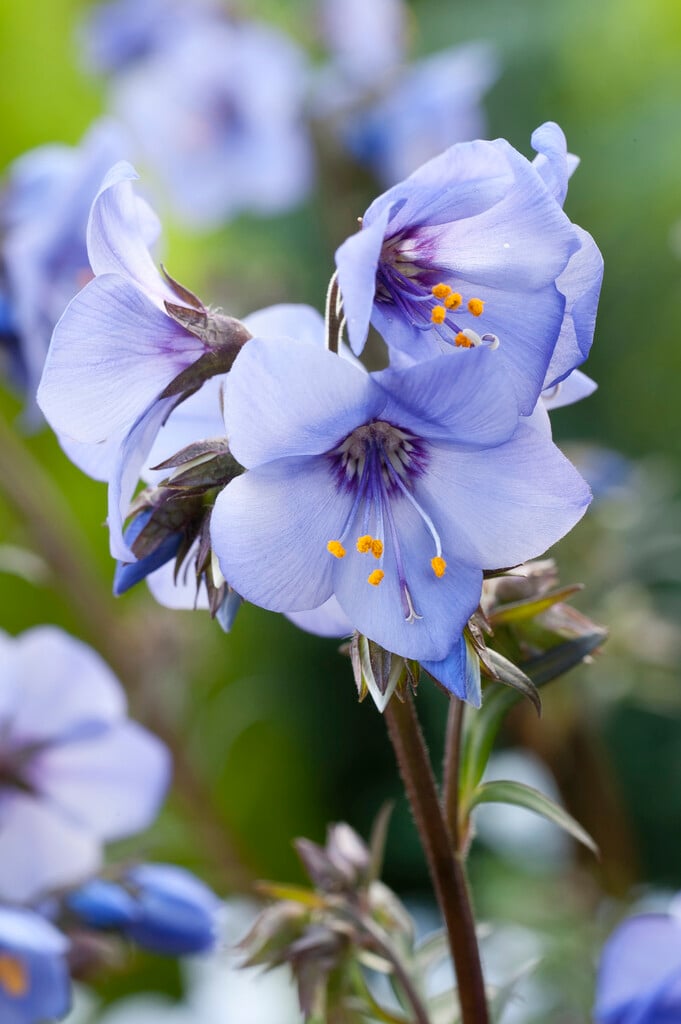Size
Ultimate height
0.1–0.5 metresTime to ultimate height
2–5 yearsUltimate spread
0.1–0.5 metresGrowing conditions
Moisture
Moist but well–drained, Well–drainedpH
Acid, Alkaline, NeutralColour & scent
| Stem | Flower | Foliage | Fruit | |
| Spring | Purple | Green Purple | ||
|---|---|---|---|---|
| Summer | Purple | Green Purple | ||
| Autumn | Green Purple | |||
| Winter |
Position
- Full sun
- Partial shade
Aspect
East–facing or South–facing or West–facing
Exposure
Exposed or Sheltered Hardiness
H6Botanical details
- Family
- Polemoniaceae
- Native to GB / Ireland
- No
- Foliage
- Deciduous
- Habit
- Clump forming
- Genus
Polemonium can be annuals or herbaceous perennials or upright or spreading habit, with pinnate leaves and usually clustered, tubular, bell, or funnel-shaped flowers
- Name status
Accepted
How to grow
Cultivation
Grow in any fertile, well drained but moist soil in sun or partial shade. Dead head regularly
Propagation
Sow seeds in containers in a cold frame in autumn or spring. Divide in spring. Propagate for own use only.
Suggested planting locations and garden types
- City and courtyard gardens
- Cottage and informal garden
- Wildlife gardens
- Flower borders and beds
Pruning
Cut back to the base in autumn
Pests
Generally pest-free
Diseases
May be susceptible to powdery mildew
Love gardening
Sign up to receive regular gardening tips, inspiration, offers and more
View our Privacy Policy
Get involved
The Royal Horticultural Society is the UK’s leading gardening charity. We aim to enrich everyone’s life through plants, and make the UK a greener and more beautiful place.

